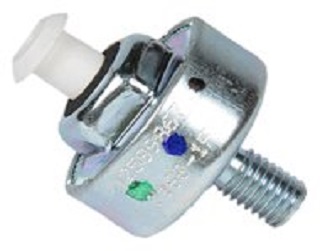
Knock sensor problems are common on 1999-2007 Chevy Silverado, Express Van, Tahoe and Suburban trucks.
Of course, this means that the GMC Sierra and Yukon of the same years have the same issues. In fact, if you have a 4.8 L 5.3 L or 6.0 L in any General Motors vehicle, including a Hummer or Pontiac, you will probably run into a check engine light indicating a defective knock sensor at some point.The check engine light registering a code P0332 or a P0327 is often the first sign you have this common problem. However, other issues can arise.
Some of the many complaints from drivers when there’s an issue in this system include engine ping, rough running when cold and lack of power due to incorrect ignition timing.Here we’ll lay out the cause and correction of the knock sensor problems on these vehicles. Whether you decide to tackle the repairs yourself or take it in and have someone do it for you this information can help you get it fixed right on the first attempt.
How a Knock Sensor Works
Let me briefly tell you how the knock sensor works. Not only is it nice to understand things that cause you a problem, but I think it will help you understand why you should not ignore it.
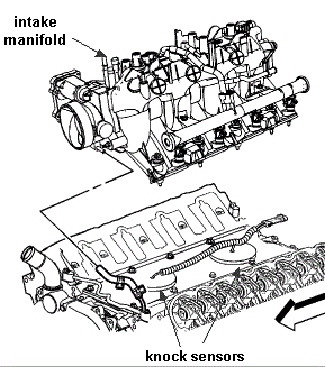
If drive around with the check engine light on when a code P0332 or a P0327 is set in the computer memory, engine damage could occur.
To me the most interesting part about the knock sensor is that it only has one wire going to it. The reason for this is the sensor generates its own voltage and is case grounded.
It’s a piezoelectric automotive sensor that produces a small voltage signal when it hears internal engine noise that we often call knock and ping. This is why the location of the two sensors is a problem.
In order to hear the engine noise reliably the sensors are buried under the intake manifold. When the knock sensor hears an engine detonation it retards the ignition timing to solve the problem.
This can compensate for low octane fuel or tank full of bad stuff from an unscrupulous gas station. Here is the reason that this automatic system becomes extremely important. If the computer does not pull back on the ignition timing and allows the detonation to continue, the heat generated from the process can cause major damage to the delicate aluminum engine parts.
What’s Wrong with the Knock Sensors
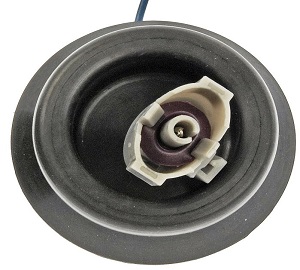
The first thing that’s wrong with the GM knock sensors is they’re located in a tunnel underneath the intake manifold.
This location can collect water over time under the right circumstances.
This wouldn’t be an issue if the knock sensor harness stayed pliable and sealed the connection.Again, because of the location, these rubber boots that seal the connector deteriorate and shrink over time. Then the water starts to get in and work its magic causing a corroded, intermittent or poor connection.
Eventually this turns on the check engine light and sets the codes P0332 and P0327. Note that often either one or the other code will set. Regardless if one or both codes are set, not only should the two original knock sensors be replaced, but you should also replace the harness.
In fact, it will most likely shatter like glass when you attempt to disconnect it. The replacement harness comes complete with new connectors and boots. You can see a picture of one at the bottom of this page.
After doing the job a few times I’ve learned I can save by using the Dorman aftermarket harness. It works well and carries a reasonable price tag. However, I would recommend going with the delco sensors as I had problems with the cheaper ones being defective right out of the box.
Is it Hard to Replace the GM Knock Sensors
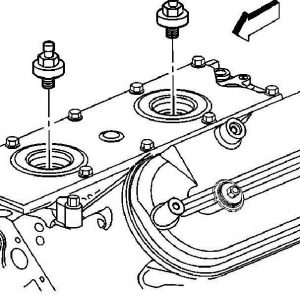
The job is time-consuming, but straightforward. With that said, ultimately the level of difficulty will depend on the skill level of the person performing it. I would not consider this a good first time DIY car repair.
The difficulty of the repair really revolves around the removal of the intake manifold.
You’ll have to depressurize the fuel rail and disconnect the fuel lines with a special tool. The good news is this common fuel line release tool is inexpensive and available below.When you look at the intake manifold there are a few brackets held down by 8 mm screws.
These will have to be removed and the brackets and accessories pulled out of the way. The other tool you might not own that you cannot do this operation without is a 22 mm deep socket. This is the size of the knock sensor itself.
Properly Prepare for the Job
You can certainly get this job done in one day if you have everything you need on hand and ready to go. One of the things that is often a stumbling block is breaking the quick disconnect clip that holds the heater bypass hose on.
Once again Chevrolet put a plastic part in a place where engine heat is excessive. The replacement clip is only five dollars, but finding one can be difficult in some areas.
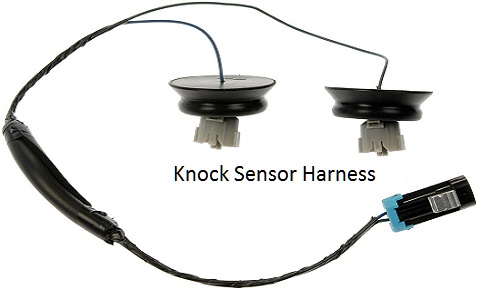
Of course you should replace the intake manifold gasket and clean all of the parts. If your LS V-8 powered General Motors Corp. car or truck needs a new knock sensor and wiring harness then it probably needs the throttle body and IAC valve cleaned as well.
They make specialized cleaners for this that help get the job done without damaging the parts. I will include these items below so you can have these things on hand.
However, note that you’ll also need a good amount of rags, a safe razor blade scraper and it’s nice to have a vacuum cleaner to suck up any particles before they work their way down toward the intake valve.
General Motors isn’t the only car company having problems with these sensors. Find out about the Nissan knock sensor codes and the relocation kit available. This way you don’t have to remove the intake manifold to replace the failed parts.
I posted this knock sensor problem page in the automotive news section of the website. You can stop over there to look for additional support articles for common car problems. You can also visit the youfixcars.com homepage to discover what else is available here.

